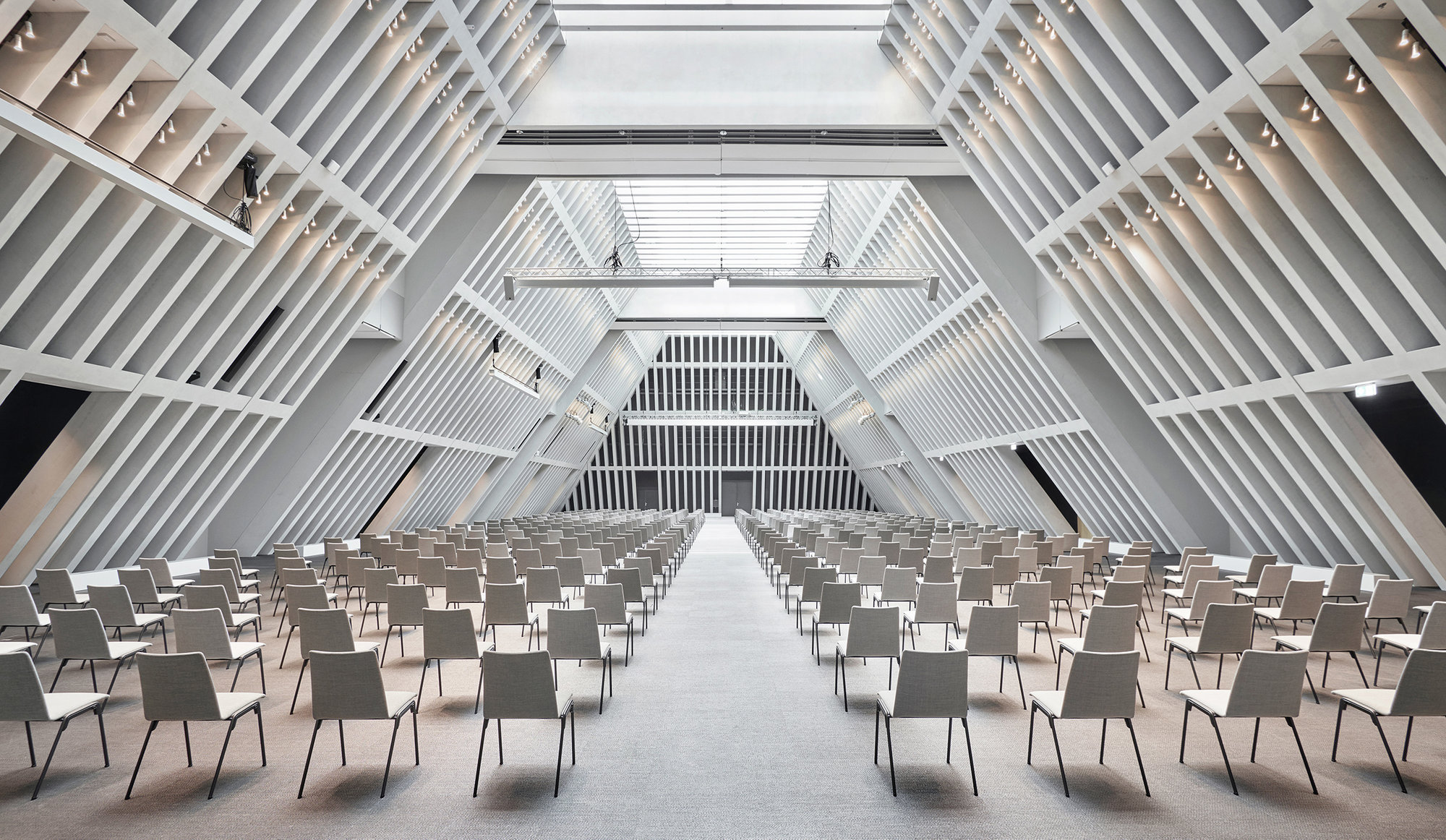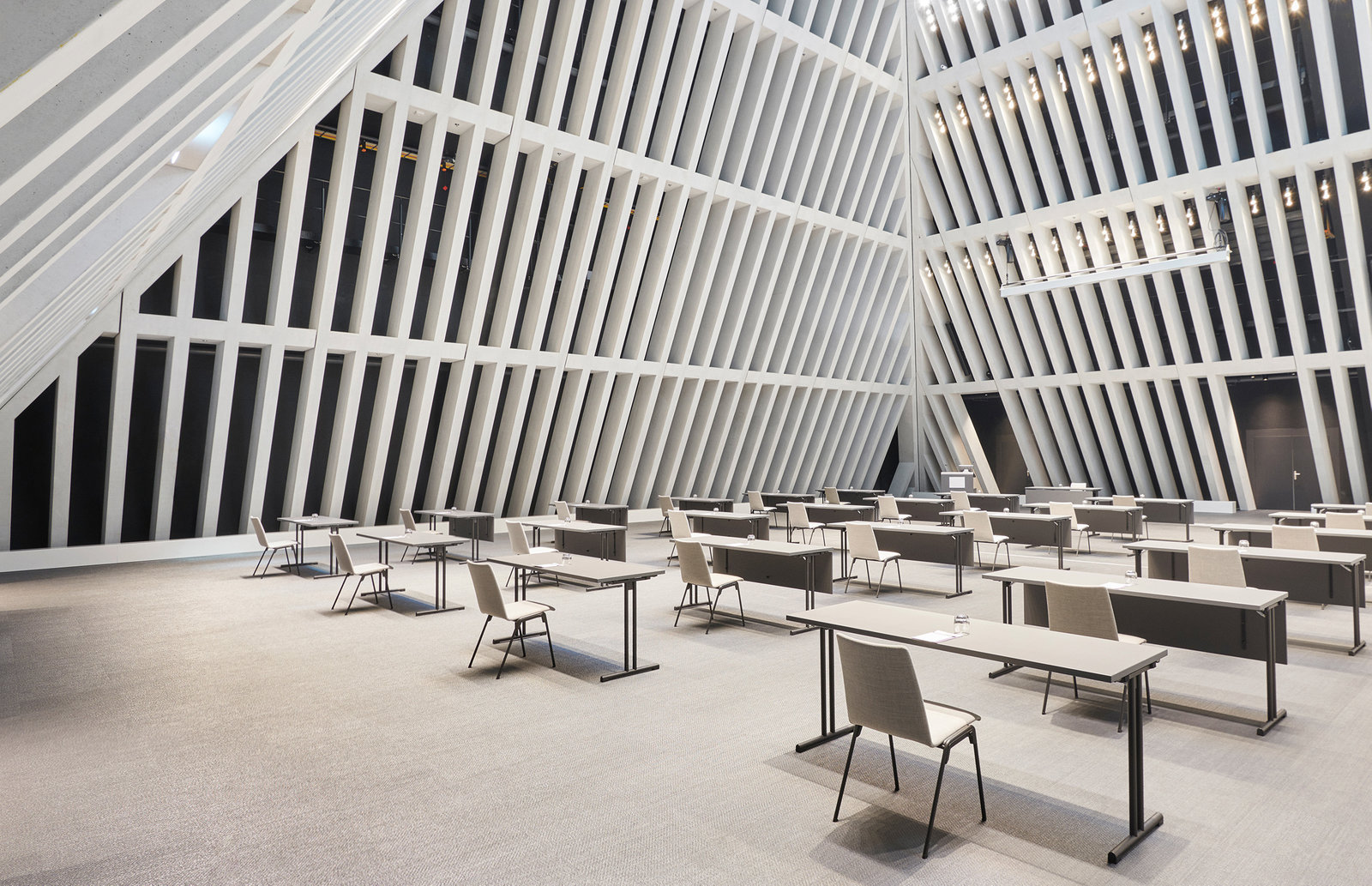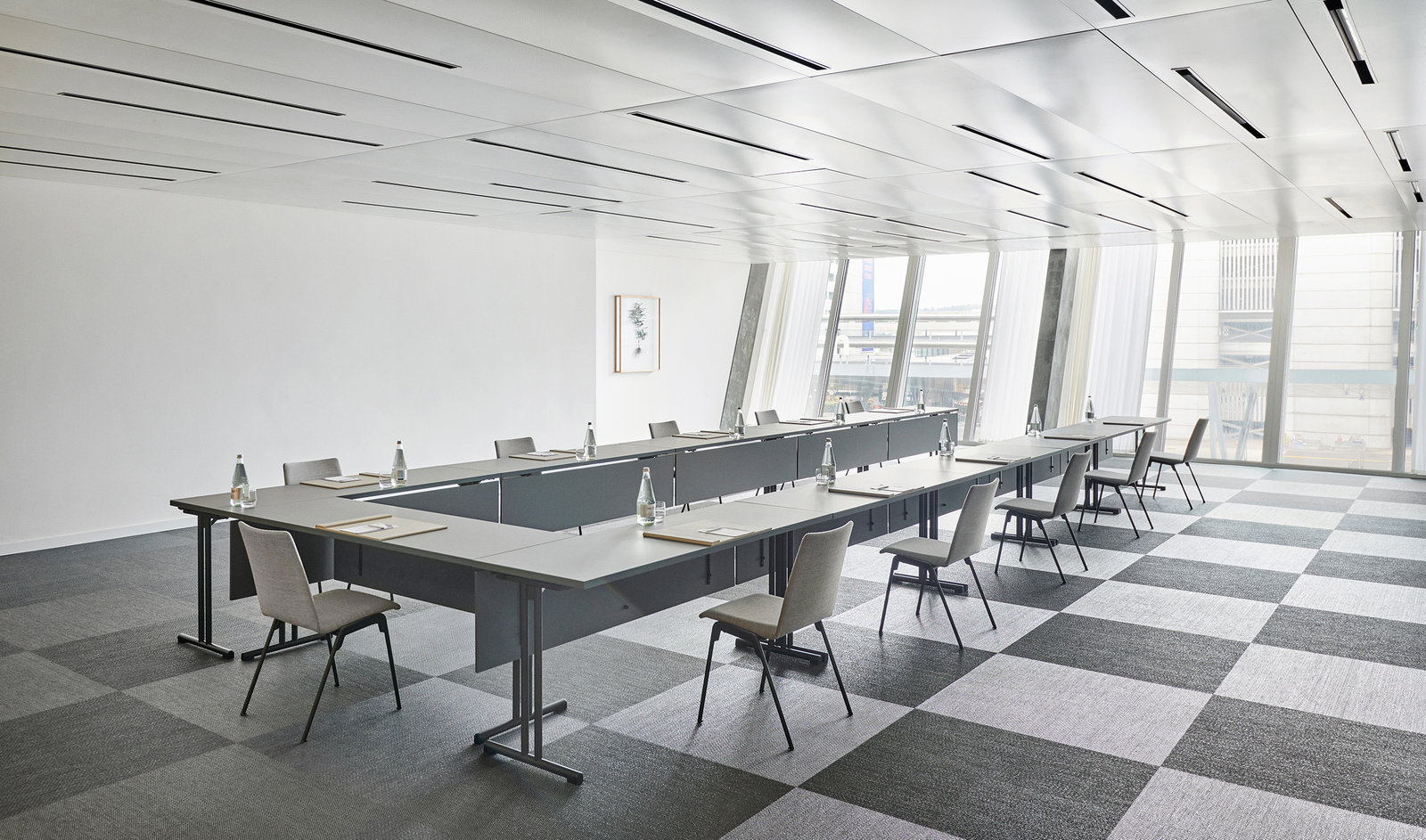For the convention hall and meeting rooms you went for the same flooring collection but different options in installation. The convention hall is covered with tiles in the same direction. The meeting rooms have a check pattern instead. Can you explain your decision?
- The interior of the congress hall with its unique architecture and glass roof plays a dominant role. That's why we decided for a rather quiet, reserved flooring. Bolon Now was the perfect match to this space. It appears as an evenly coloured surface, but gives it something full of energy thanks to its metallic sheen.
For the meeting rooms, we wanted more dominance in the flooring. We chose Bolon Now again, but with a different optic in the installation. The 50 x 50 tiles were assembled in a special way to create an expanded check pattern. We find this solution gives the space a strong expression.
Something that unites Kalfopoulos Architects, Riken Yamamoto and Bolon is the importance of sustainability. The Circle Convention Center is certified with the highest rate of green building certification Programme, the LEED Platinum®.
Its valuation is based on different topics, amongst these energy + global environmental impacts, material cycles + resource conservation or indoor air quality. How did this influence your work?
- We have been active in the high-end sector for many years. Therefore, we are familiar with working with natural & mineral materials. To meet the requirements of the LEED program, we went deeply in search of sustainable materials and companies. In that process we also visited Bolon Headquarters with its production and recycling plant to get an idea of their work. In such a sustainable project it is important to combine the right materials, products and companies. Our visit in Sweden was a very nice experience and an approval to our made decisions.
Read more about our certifications here.


